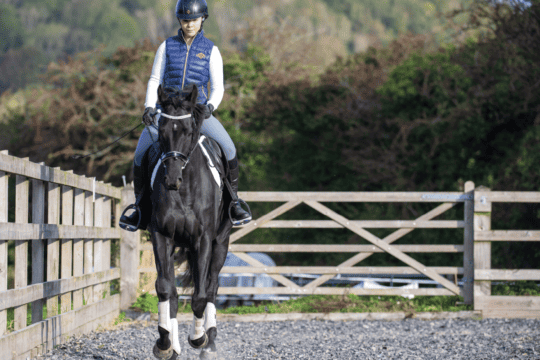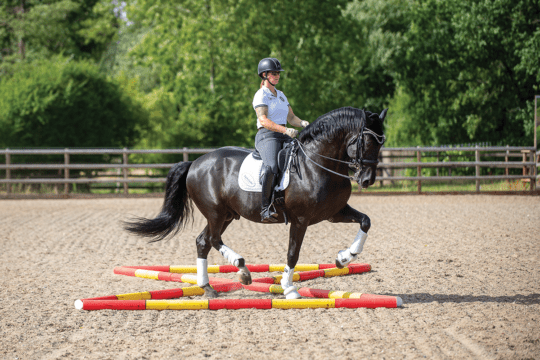Featured Professional
Carl Hester swaps his team of Rolls-Royces for something a little less powerful, as he test-drives Lucy, who belongs to H&R’s Editor, Nicky

It didn’t take me long to work out why Carl Hester is at the top of his sport. When he rode Lucy, I got instant – and very accurate – feedback. “She’s stiffer to the left… Her right hock doesn’t step through as much as her left one… She has a great rhythm, but needs to be more in front of the leg… She tends to drop the poll a little in walk and then gets a bit ‘head-noddy’, so when she does that, lift the hand and ride her a bit quicker.”
All these things I had learnt gradually about my horse over 10 years of owning her, but Carl picked up on them straightaway. I watched eagerly as he put my mare through her paces, listening to every word he said. So here’s what happened when Lucy met Carl…
And I think you’ll agree, his advice and exercises are useful for all different levels of horse and rider.

Straighten up
“Straightness is an issue that should be addressed right from the start of any horse’s flatwork training. It’s especially important if you want to do dressage, because it is the foundations you need for moving up the levels,” said Carl.
He soon noticed that Lucy is heavier in the left rein than she is the right one. “She wants to fall out through the right shoulder, which makes her drift right,” Carl explained, “so there’s the temptation to pull on the inside (left) rein to try to correct it – when really, you need to take up more contact on the right rein.
“If you think about it, pulling on the left rein will bend the head and the neck – but where does that leave the right shoulder? Even further to the right! So instead, think of turning the right shoulder when you’re riding a left circle by closing up your right aids more. Here are some good straightening exercises to try…”
(Note: If your horse is heavier in your right hand and falls out through the left shoulder, then try these exercises on the right rein.)
 Exercise 1
Exercise 1
Square circles
1 Ride straight for 15 metres…
2 Then turn as though making a right angle…
3 And ride straight again
Square circles are great for getting the rider to focus less on the inside aids and more on the outside ones.
“Think of riding a 15m square,” said Carl, “so you ride straight for 15m, then close up your right rein and leg to make the turn – think towards riding a quarter pirouette.”
Always start any new exercise in walk, and only progress to trot and canter when you feel ready.
 Exercise 2
Exercise 2
Leg yield
Leg-yielding is a great exercise for straightening and what’s more, it’s something that riders of any level can have a go at.
To work out how it will benefit your horse most, Carl explained that you first need to think of which way the shoulders fall out, then simply leg-yield in the other direction.
Lucy’s shoulders fall to the right, so leg-yielding to the left will help straighten her up.
Again, start in walk and trot until your horse gets the idea.
“Until your horse gets the hang of leg-yield, just ask for a few steps,
then ride straight again,” said Carl.
“That way, you don’t lose forward momentum.”
To make this exercise trickier, Carl explained how to ride it in canter. He put Lucy in left canter and, after cantering around the short side,
leg-yielded her to the left. “This brings her shoulders to the left and stretches the whole of her left side, which is exactly what we want to do,” Carl said.
 Exercise 3
Exercise 3
Renvers
If the word ‘renvers’ sends shivers down your spine, try thinking of it in Carl’s simple terms. “It’s just shoulder-in with the wrong bend,” he explained. “So many people freeze up when I ask them to ride renvers, but it really isn’t that difficult once you practise it.” For Lucy (who falls out through her right shoulder and doesn’t want to bend the left side of her body), renvers is best done on the left rein.
To ask for renvers on this rein, ride along the short side, making sure you have a feel in the right rein. As you come out of the short side, put your right leg on to bring your horse’s shoulders to the left, but still keeping that right flexion.
If you feel your horse starting to drift out of renvers, ride a few steps of leg-yield to the left, then try it again down the next long side.
Our rosette symbols highlight expert riding advice for various levels
















